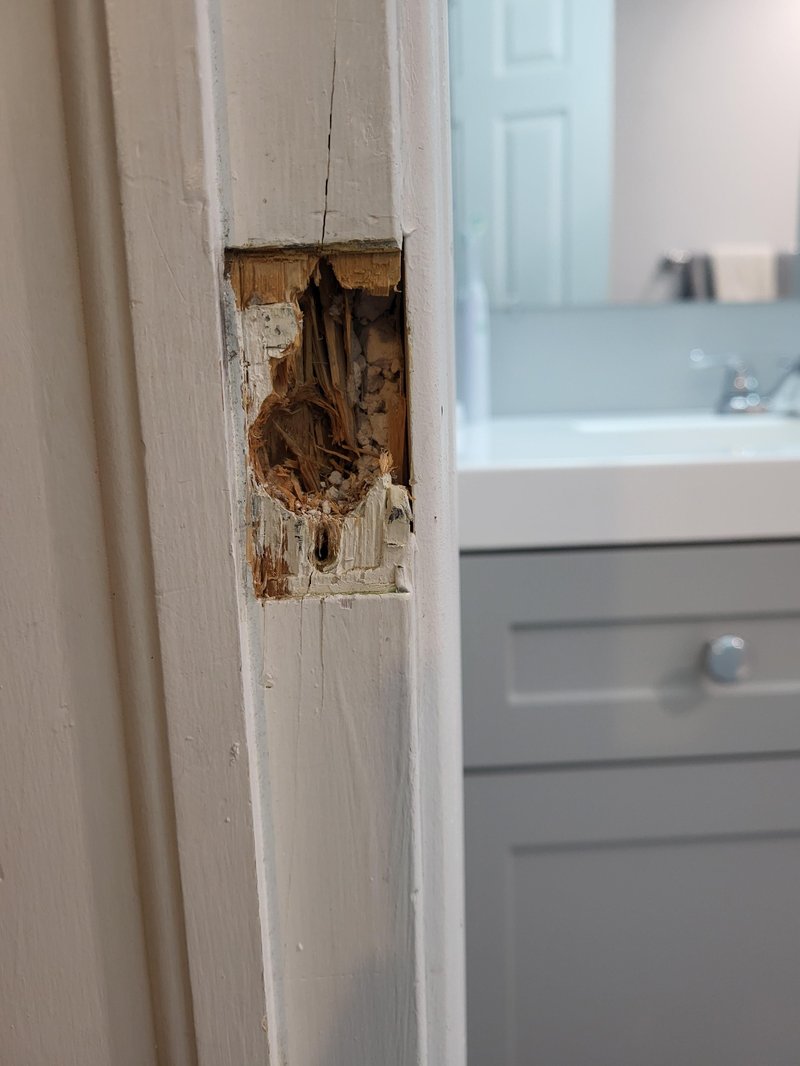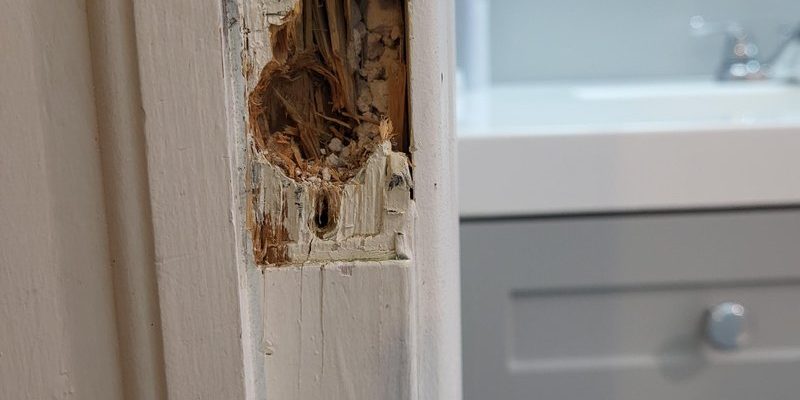
Here’s the thing: fixing a loose deadbolt strike plate isn’t as complicated as it might sound, even for beginners. Whether you’ve got a standard Schlage, Kwikset, or Defiant deadbolt, or some off-brand model that came with the house, the basic repair steps are almost always the same. And you don’t need to be “handy” to get this right—you just need to know what to look for, what tools to grab, and what to do next. Let me walk you through the whole thing, step by step, so you can get your door locking strong again.
Why Does A Deadbolt Strike Plate Get Loose?
You might be wondering: “Why did my strike plate loosen up in the first place?” It’s a fair question. Honestly, the main culprit is usually just wear and tear. Every time you open or close your door, pressure travels right through the bolts, remote latch, and strike plate. Over time, this movement can make screws wiggle out, especially if the wood around them starts to get soft, split, or stripped.
Sometimes, installation issues can play a role. If the original installer didn’t sync up the strike plate perfectly with the deadbolt, or if they used the wrong length screws, the plate might start shifting sooner than expected. And if you live somewhere with dramatic seasons, the constant freeze-and-thaw can make wooden frames swell and shrink, loosening up hardware even more.
So, no, it’s rarely a sign of a major security problem (unless your lock is failing altogether). Think of it more like a check engine light—annoying, but totally fixable if you catch it early.
Signs Your Strike Plate Is Too Loose (And Why It Matters)
Let me explain how you know when your strike plate needs attention. The most obvious sign: the screws on the plate seem to “float” when you touch them, or you can wiggle the plate back and forth with your fingers. Sometimes, you’ll even hear a rattling or tapping noise when you close the door. If you need to really slam your door to get the deadbolt to catch, that’s another big red flag.
Why does this matter? For starters, a loose strike plate can prevent your deadbolt from fully extending, which means your door isn’t locking as securely as it should. That undermines your home’s security, no matter what brand of deadbolt you’ve got. It can also lead to more wear and tear on the lock itself, which might mean bigger (and more expensive) repairs down the line.
If you spot this early, you can fix it with just a few basic tools and a bit of patience. Don’t let a loose strike plate turn into a door that won’t lock, period.
Tools And Supplies You’ll Need
Honestly, you probably already have most of what you need in a basic toolbox. Here’s a quick checklist:
- Screwdriver (usually Phillips, but check your plate)
- Wood glue or toothpicks (for stripped screw holes)
- Longer or thicker wood screws (if needed)
- Drill (optional, but makes things easier)
- Utility knife (for cleaning up the hole if it’s messy)
- Wood filler (for really worn-out frames)
- Measuring tape (to check alignment)
Don’t panic if you’re missing a few items—there are workarounds. Toothpicks or matchsticks can help reset a stripped hole in a pinch, and you can always use a manual screwdriver if you’re careful. If you keep things organized and double-check each step, you’ll get better results and less headache.
Step-By-Step: How To Repair A Loose Deadbolt Strike Plate
Everyone’s door has its quirks, but the basic repair routine stays the same. Here’s the step-by-step:
- Remove the strike plate: Use your screwdriver to unscrew the plate. Set the screws and plate aside somewhere you won’t lose them.
- Check the screw holes: Are they stripped out, oversized, or splitting? This is a sign the wood needs some love.
- Fix stripped holes: If the screws won’t tighten, try packing the hole with wood glue and toothpicks (break them off flush). Let it dry, then reinsert the screw. For worse cases, go with wood filler and let it cure fully before moving on.
- Try longer or thicker screws: Sometimes, using a 2.5–3 inch wood screw will grab deeper, more solid wood behind the frame. This is especially helpful in older, softer frames.
- Reattach and align the plate: Hold the plate where it needs to go and add the screws. Don’t overtighten, or you’ll strip it again.
- Test the deadbolt: Lock and unlock several times. Make sure the bolt slides smoothly into the strike plate and doesn’t catch. If it’s sticky, you may need to nudge the plate up, down, left, or right until perfect alignment is achieved. Sometimes, a sliver off with a utility knife or chisel can help.
If everything feels tight and the deadbolt clicks in with no extra effort, you’ve done it right. If not, don’t stress—just repeat the hole-fixing process, or try even longer screws.
Alternative Fixes If The Frame Is Severely Damaged
Sometimes, the wood around your strike plate is just too far gone for a quick fix. You’ll know it if the screws refuse to grip, no matter how many toothpicks or fillers you try. At this point, you’ve got a couple of alternative options.
One trick is to move the strike plate to a more solid spot. Shift it slightly up or down, drill fresh holes, and sink your screws into untouched wood. This isn’t always the prettiest, but it’s effective, especially if you’re in a hurry.
Alternatively, you can buy a heavy-duty repair plate or reinforcement kit designed for worn-out wood frames. These come with bigger anchors and sturdy metal plates that spread out the force from your deadbolt. Brands like Schlage, Defiant, and Kwikset all make universal repair kits, and they’re pretty straightforward to install.
For major wood rot or severe split frames, you may need to patch the area with a new piece of wood or even replace a section of the door jamb. That’s a bigger job—but for most loose strike plates, these simpler fixes will get you back to solid, secure locking.
How To Prevent A Strike Plate From Coming Loose Again
Once you’ve got the strike plate repaired, it’s worth spending a couple extra minutes on prevention. Why go through all this hassle just to have it happen again?
- Use longer screws from the start. The “default” screws that come with most locks are only an inch or so—go for 2.5 inch screws to anchor into the wall stud.
- Keep your door aligned. If your door drags or sags, it puts extra stress on the lock and strike plate. Tighten hinge screws, or shim the hinges if needed, to make sure the deadbolt lines up perfectly every time.
- Check the plate regularly. Make a habit of giving your strike plate a quick wiggle every couple of months. A few twists of the screwdriver can save you from a full repair job later on.
Here’s a tip: if you ever upgrade your deadbolt or door hardware, always check the frame and strike plate at the same time. It’s a simple step that can add years of security and smooth performance to your lock setup.
What If My Door Still Won’t Lock Properly?
Ever run through all these steps, only to find your deadbolt is still being fussy? Don’t worry—you’re not alone. Sometimes, the issue isn’t just with a loose strike plate. Here are a few other things that could be going on:
- The deadbolt itself is sticking. Over time, debris, weather, or a worn-out mechanism can make the bolt sticky. Try spraying a little graphite or silicone lock lubricant (never oil) into the mechanism and working the key a few times.
- The door has warped. If your wood door has expanded or warped, the deadbolt might not line up even if the strike plate is solid. In this case, you may need to sand or plane the edge of the door slightly so everything syncs up.
- Security plates or smart locks are out of alignment. If you’ve installed smart lock hardware or reinforced plates, double-check their positioning—they can sometimes shift the lock or plate out of perfect alignment.
Let me say this: Don’t force your deadbolt if it’s stuck. Too much pressure can break the mechanism or even snap off the key inside. If you can’t fix the alignment after adjusting the strike plate, it may be time to call a locksmith or consider a fresh install.
Comparing Standard And Reinforced Strike Plates
If you’re fixing a loose strike plate, you might wonder if it’s worth upgrading to a reinforced model. Here’s how the two types stack up:
| Standard Strike Plate | Reinforced Strike Plate |
| Usually comes with the deadbolt kit. Simple metal plate, easy to install. Good for interior or low-traffic doors. | Thicker steel or layered construction, sometimes with integrated anchors. Designed to withstand more force (like a forced entry attempt). Recommended for exterior doors and higher security needs. |
| Short screws (1–1.5 inches) that only bite into the door frame. | Long screws (2.5–3+ inches) that go deep into the wall stud, offering much more resistance to impact. |
| Easy to install and replace if you’re in a hurry. | Takes a few extra minutes to install but adds real peace of mind. |
If you want to boost security and stop future problems, a reinforced plate is a smart investment. They aren’t expensive, and almost every brand—Schlage, Defiant, Kwikset, Yale—makes some kind of “security strike plate” or reinforcement kit.
Closing Thoughts
A loose deadbolt strike plate might seem like a small problem, but it’s one that can get worse if ignored. If your door isn’t locking easily or the strike plate wobbles, tackling the repair yourself is honestly one of the most helpful things you can do for your home’s security. Most fixes only take about 15–30 minutes, a few basic tools, and a bit of patience.
Don’t let a tiny piece of hardware stand between you and peace of mind. With these steps, you’ll know exactly how to spot, fix, and prevent a loose deadbolt strike plate on any wood door frame—so your locks stay strong and your home stays secure.
